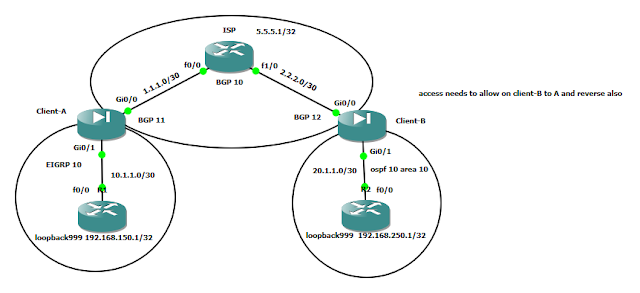OSPF LSA's
| Type | LSA | Functionality |
| 1 | Router | Defines the state and cost of the link to the neighbor and IP prefix associated with the point-to-point link. |
| 2 | Network | Defines the number of routers attached to the segment. It gives information about the subnet mask on that segment. |
| 3 | Summary network | Describes the destination outside an area but within the OSPF domain. The summary for one area is flooded into other areas, and vice versa. |
| 4 | Summary ASBR | Describes the information about the ASBR. In a single area, there will be no summary Type 4 LSA. |
| 5 | External | Defines routes to destination external to OSPF domain. Every subnet is represented by a single external LSA. |
| 6[*] | Group membership | |
| 7 | NSSA | Defines routes to an external destination, but in a separate LSA format known as Type 7. |
| 8[*] | Unused | |
| 9–11[*] | Opaque | |
[*] Type 6 is used for group membership in Multicast OSPF (MOSPF), which is not implemented by Cisco. Type 8 is unused, and Types 9–11 are used for Opaque LSA, which is not used for route calculation but is used for MPLS traffic engineering, which is beyond of the scope of this chapter. More information about Opaque LSA can be found in RFC 2370.

Comments
Post a Comment